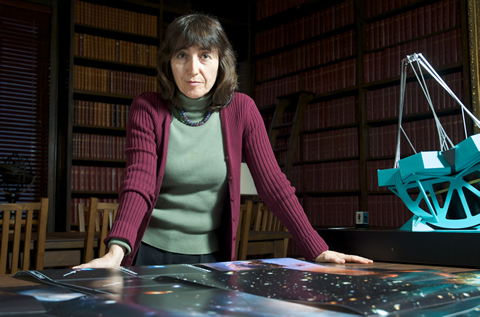When Wendy Freedman was about 10 years old and on a family trip to Lake Simcoe in Ontario, she recalls staring up at the dark evening sky as her father, Harvey, introduced her to the concept of the speed of light.
Dr. Freedman, who was an associate professor of psychiatry at U of T, told his daughter how the light from those pinpoints – even the closest ones – had been travelling for years before it reached her eyes. He added, intriguingly, that the stars from which the light originated may have since died out. “That was just fascinating,” recalls Wendy.
Freedman went on to study astrophysics at U of T before taking up a fellowship in 1984 at the Carnegie Observatories of the Carnegie Institution of Washington, in Pasadena, California. She joined the permanent faculty in 1987. The Carnegie Observatories director since 2003, Freedman recently received the 2009 Peter and Patricia Gruber Foundation cosmology prize for groundbreaking research into the Hubble constant. (She was one of three recipients, along with colleagues Robert Kennicutt and Jeremy Mould.) “It’s a nice distinction,” says Freedman (BSc 1979 UC, MSc 1980, PhD 1984), who notes that the 2008 winner, J. Richard Bond, is a University Professor at U of T. “Canadians have done well.”
Freedman refines techniques for measuring the speed at which the universe is expanding, known as the Hubble constant. The renowned American astronomer Edwin Hubble discovered this phenomenon, but measuring the distances between diverging galaxies proved to be exceptionally difficult because of the “blurring effect” of intergalactic dust.
For her PhD thesis, Freedman developed techniques for accounting for those obscurations, basically by examining the relationship between the brightness of distant objects and their rates of oscillation. After NASA launched the Hubble Telescope in 1990, Freedman worked as a project leader on the Extragalactic Distance Scale project, which further refined those measurements and led to a precise assessment of the universe’s age (13.5 billion years).
In recent years, Freedman and her colleagues have been studying supernovae, the “dark energy” that seems to be pulling the universe apart, and how new findings relate to Einstein’s general theory of relativity.
While her work has practical applications in X-ray technology, Freedman says the research probes at the most fundamental questions of existence because of its focus on the origins of the universe and its present condition. “It really does change our perspective of who we are.”
Watch a Carnegie Observatories video about the Hubble Constant:






